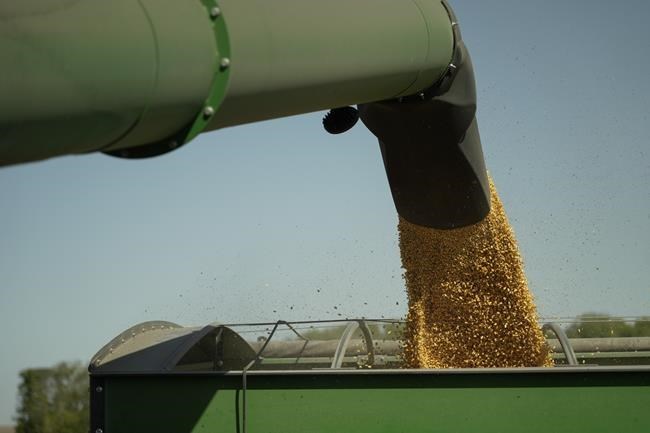WASHINGTON (AP) ŌĆö Wholesale prices in the United States picked up in January, the latest sign that some inflation pressures in the economy remain elevated.
The Labor Department reported Friday that its ŌĆö which tracks inflation before it reaches consumers ŌĆö rose 0.3% from December to January after having fallen -0.1% from November to December. Measured year over year, producer prices rose by a mild 0.9% in January.
Excluding volatile food and energy costs, ŌĆ£coreŌĆØ wholesale prices rose 0.5%, the most since last July. Compared with a year ago, core prices climbed 2%, up from 1.7% in the previous month.
Public frustration with inflation has become in President Joe BidenŌĆÖs re-election bid. Measures of inflation have plummeted from their heights and are nearing the Federal ReserveŌĆÖs target level. Yet many Americans remain exasperated that average prices are still about 19% higher than they were when Biden took office.
Some of the January rise in producer prices was driven by measurement quirks. They include an increase in the cost of financial management services, which jumped 5.5% just from December to January. In addition, many companies impose price increases early in the calendar year, which often boosts overall inflation measures in January.
At the same time, though, the costs of hospital care, doctor visits and hotel stays also jumped last month, a sign that inflation in travel, health care and other service industries also remains elevated.
Friday's figures will likely underscore the Fed's caution about when to begin cutting its benchmark interest rate. Fed officials will likely want to monitor several more months of data to ensure that a downward trend in inflation will continue.
The wholesale figures follow a that showed that consumer prices eased less than expected last month, signaling that the is only gradually and fitfully coming under control.
Some of Friday's data is used to calculate the FedŌĆÖs preferred price measure, which will be reported later this month. That gauge has been running well below the better-known consumer price index. In the second half of 2023, the Fed's favored measure, showed that prices rose at just a 2% annual rate, matching its inflation target.
But after Friday's release of wholesale prices, economists forecast that when core prices in the Fed's preferred gauge are reported later this month, they will have jumped by as much as 0.4% or 0.5%, a pace much faster than would be consistent with the Fed's inflation target.
Fed officials have expressed optimism that inflation is headed lower, and in December they forecast that they would cut their benchmark rate three times this year. Last year, the Fed hiked its rate to a 22-year high of about 5.4% to extend its concerted drive to conquer high inflation. Its rate hikes, which were intended to cool borrowing and spending, have made it far more expensive to obtain mortgages, take out auto and business loans or use credit cards.
Should inflation return to the Fed's 2% target, high borrowing rates would likely no longer be deemed necessary. Instead, the Fed would be expected to cut rates, which would make consumer and business loans more affordable.
Still, some officials remain cautious. Late Thursday, Raphael Bostic, president of the Federal Reserve Bank of Atlanta, said he was ŌĆ£not yet comfortable that inflation is inexorably declining to our 2% objective.ŌĆØ
But other Fed policymakers said they were still optimistic, even after the release of the hot consumer inflation report Tuesday. Austan Goolsbee, president of the Chicago Fed, said Wednesday that by assessing data over longer periods than just one month, ŌĆ£it's totally clear that inflation is coming down.ŌĆØ
Some Wall Street traders and economists had expected the Fed to implement its first rate cut as soon as March. But two weeks ago, and said the Fed needed ŌĆ£greater confidenceŌĆØ that inflation is sustainably returning to its 2% target before it would start reducing rates. Most economists now envision a rate cut in May or, perhaps more likely, in June.
Fed officials have expressed optimism that inflation is headed lower, and in December they forecast that they would cut their benchmark rate three times this year. Last year, the Fed hiked its rate to a 22-year high of about 5.4% to extend its concerted drive to conquer high inflation. Its rate hikes, which were intended to cool borrowing and spending, have made it far more expensive to obtain mortgages, take out auto and business loans or use credit cards.
Two weeks ago, and said the Fed needed ŌĆ£greater confidenceŌĆØ that inflation is sustainably returning to its 2% target before it would start reducing rates. Most economists now envision a rate cut in May or, perhaps more likely, in June.
Christopher Rugaber, The Associated Press


